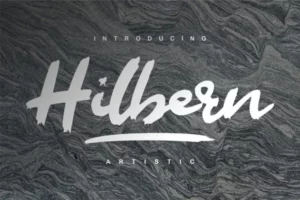What Does User-Friendly Mean and How to Apply it?

In an increasingly crowded digital space, the battle for user attention rages on. Whether you’re a UX designer, web developer, or content creator, your work revolves around one central mission: to create an interface that’s not just functional but also delightful to use. This pursuit lies at the heart of the user-friendly design, a term often thrown around the design community with varying degrees of understanding.
But what exactly does it mean to be user-friendly, and how do you weave this ethos into the work you do? This extensive guide will dissect the intricacies of user-friendly design and provide a clear roadmap for ensuring the digital spaces we create are truly user-centric.
What is User-Friendly Design?
At the core of user-friendly design is the principle of making digital products intuitive and easy to use for the end-user. It’s about crafting experiences that feel instantly familiar, allowing users to interact with a site or an app without any hiccups or a steep learning curve. But user-friendly design goes beyond mere usability; it encompasses every touchpoint of the user’s journey, from the first click to achieving their goal.
Defining User-Friendly Design
User-friendly design is the practice of creating interfaces with the user’s needs and behaviors in mind. In essence, it’s a set of standards and best practices that center around the user, emphasizing clarity, simplicity, and efficiency. These standards can be as simple as using clear navigation or complex as customizing the experience based on the user’s history with the product.
Core Principles
There are several key tenets to user-friendly design:
- Clarity and Consistency: Ensure elements are easily understood and that the system behaves predictably.
- Efficiency: Streamline processes to reduce the effort on the user’s part.
- Accessibility: Design with inclusivity in mind to accommodate for different abilities.
- Feedback and Feedforward: Keep the user informed of system status and the outcome of their actions.
- Desirability: Incorporate elements that are aesthetically pleasing and evoke positive emotions.
Importance in the Digital Landscape
With the increasing competition and the user’s dwindling attention span, user-friendly design is not an optional feature; it’s a necessity. A well-crafted user-friendly website can significantly improve engagement, conversion rates, and customer satisfaction.
Understanding Your Audience
No design can be user-friendly without a deep understanding of the target audience. To design for the user, one must empathize with them, stepping into their shoes to perceive the digital experience from their perspective.
Identifying User Needs
Surveys, user testing, and analyzing user data are essential to mapping out the needs and desires of your audience. These insights will guide the creation of a tailored user experience that resonates with your users. Techniques like persona mapping and customer journeys are powerful tools in this quest.
Empathy in Design
Empathy is perhaps the most critical skill in the designer’s toolkit. By empathizing with users, you become more attuned to their pain points and can design more thoughtful solutions.
Applying User-Friendly Design in Practice
Translating the theory of user-friendly design into practical implementation requires a thoughtful approach and adoption of best practices.
UX Design Best Practices
For a UX designer, user research, prototyping, and usability testing are primary activities. Incorporating these techniques into the design process results in a more user-friendly product.
Web Development and User Experience
For web developers, building with responsive design, fast loading times, and secure transactions heavily influence the user-friendliness of a site. Compatibility with different devices and browsers is non-negotiable.
Creating User-Friendly Content
Content creators play a key role in the user experience. Consistent voice and tone, scannable content, and the use of multimedia are all tactics for creating user-friendly content.
Case Studies in User-Friendly Design
Looking at case studies like the success of the Apple App Store or the effortless product search on Amazon showcases user-friendly design at its best.
Measuring User-Friendliness
Quantifying user-friendliness is challenging, but it’s essential for recognizing areas in need of improvement and tracking progress.
Key Performance Indicators (KPIs)
Conversion rates, bounce rates, and user engagement metrics are all indicators of user-friendliness. By monitoring these KPIs, you can gauge the effectiveness of your design.
Tools for Evaluation
Tools like heatmaps, A/B testing, and user behavior analytics can provide actionable data on how users interact with your design.
Feedback Loops
No data is as valuable as direct user feedback. Providing clear channels for feedback and being open to it is crucial for iterative design.
SEO and User-Friendly Design
Search engine optimization (SEO) and user-friendly design are inextricably linked. A user-friendly site is more likely to satisfy search engine criteria, subsequently leading to higher rankings.
Impact on Search Rankings
Search engines have become increasingly sophisticated, rewarding user-friendly sites with higher visibility. A focus on user experience often aligns with SEO best practices.
Content Optimization for Both Users and Search Engines
Balancing high-quality content that engages users with content that is discoverable by search engines is a fine art. Strategies like keyword placement, meta tags, and internal linking all contribute to a user-friendly and SEO-optimized site.
Conclusion
User-friendly design is not a fixed destination that you reach, but a continuous journey of refinement. By considering the needs of your audience, actively measuring user-friendliness, and integrating SEO best practices, you’ll be well on your way to creating digital experiences that captivate and retain users.
To stay informed about the latest trends and developments in user-friendly design, keep practicing, asking for feedback, and learning from your peers. User-friendly design is a collaborative effort that benefits from diverse perspectives and relentless pursuit of perfection.




